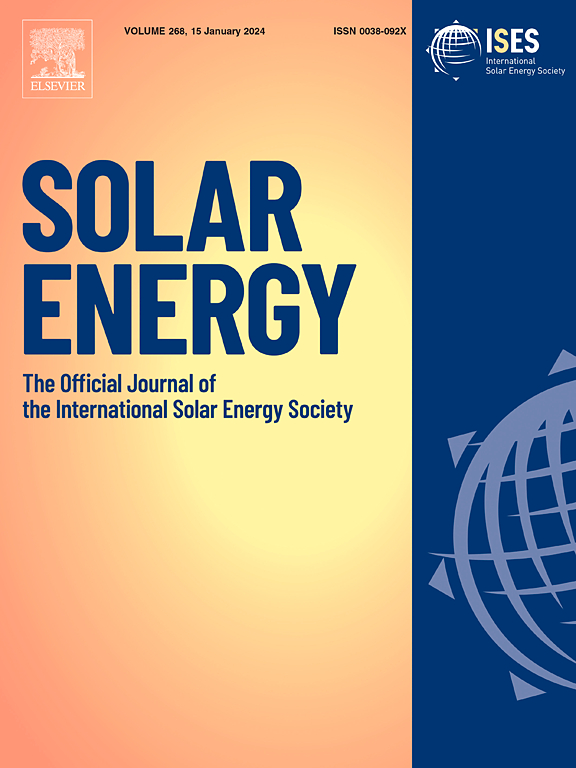Key parameters influencing wind-induced aeroelastic responses of single-axis solar trackers in photovoltaic plants
IF 6
2区 工程技术
Q2 ENERGY & FUELS
引用次数: 0
Abstract
Single-axis solar trackers enhance energy production and cost-effectiveness in large-scale solar installations compared to fixed panels. However, their structural design must address unique challenges, particularly regarding wind resistance, due to reduced mechanical properties for cost savings.
This article examines several key parameters of solar plants and evaluates their influence on tracker response, emphasizing wind-induced aeroelastic effects. These parameters include the layout arrangement of solar plants and the inter-row spacing. Tracker position has been evaluated in a 4-rows by 2-column corner region of rectangular tracker plant, with two ground cover ratios of 0.38 and 0.25. Moreover, the effects of the operational parameters of individual trackers have also been monitored, considering working pitch angles in the range between and and wind exposure angles of 0°, 15°, 30° and 45°. Structural properties were assumed to remain constant.
The research combines experimental wind tunnel tests with numerical dynamic simulations based on a finite element model, monitoring the internal stress state to assess performance.
Results show that large pitch angles () exhibit stable aeroelastic behavior, while small pitch angles, between and , become unstable after reaching a certain velocity threshold. Among the monitored pitches, inclinations between 15° and 30° are the most critical in terms of internal response. The research confirms that trackers on the perimeter are the most stressed in the plants. The largest load cases occur with wind directions normal to the tracker axis. Finally, the analysis of the spacing between rows showed no significant effect on the response.
求助全文
约1分钟内获得全文
求助全文
来源期刊

Solar Energy
工程技术-能源与燃料
CiteScore
13.90
自引率
9.00%
发文量
0
审稿时长
47 days
期刊介绍:
Solar Energy welcomes manuscripts presenting information not previously published in journals on any aspect of solar energy research, development, application, measurement or policy. The term "solar energy" in this context includes the indirect uses such as wind energy and biomass
 求助内容:
求助内容: 应助结果提醒方式:
应助结果提醒方式:


